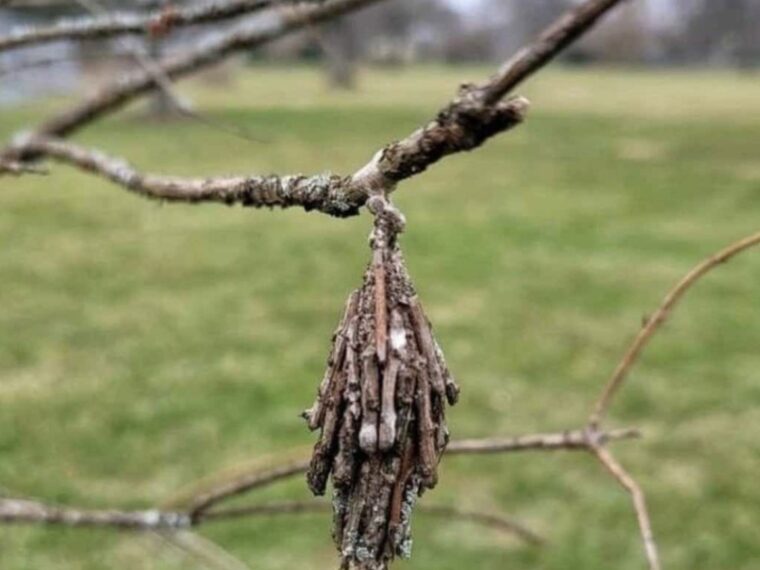Bagworms go through several stages of development, and understanding their lifecycle can help you know when to act.
- Eggs: Bagworm eggs are laid inside the female’s bag during late fall or early winter. The eggs hatch in the spring, marking the beginning of the larvae’s destructive feeding habits.
- Larvae: In the spring, the larvae emerge and begin to create their bags. They start feeding on the foliage of nearby trees, attaching themselves to branches and growing larger as they feed.
- Pupae: After several weeks of feeding, the larvae enter the pupal stage. During this stage, they stay inside their protective bags while they undergo metamorphosis into adult moths.
- Adults: The adult male moths emerge from their bags in search of mates. The females, however, remain inside their bags, where they lay their eggs to start the cycle again.
🧑🔬 How to Control and Prevent Bagworm Infestations
While bagworms may seem like an unstoppable force, there are several methods you can use to control or prevent their damage. The key is early detection and quick action.
1. Hand-Pick the Bags
If you catch the infestation early, you can simply remove the bags by hand. Carefully cut or twist the bags off the branches and dispose of them. This is best done in late summer or early fall, when the larvae are still inside the bags but not yet pupating. Be sure to destroy the bags by burning them or throwing them in the trash.
2. Insecticidal Sprays
If the infestation is more widespread, you may need to use insecticides. Bacillus thuringiensis (Bt), a naturally occurring bacterium, is an effective option for bagworms. It’s a safer choice for beneficial insects and doesn’t harm your trees. Apply it to the tree foliage in late spring or early summer when the larvae are feeding but before they start forming their bags.
For more stubborn infestations, you may need to use chemical insecticides. These should be used cautiously and according to the instructions on the label to minimize harm to the environment and other wildlife.
3. Neem Oil
Neem oil is another natural pesticide that can help control bagworm larvae. It works by disrupting the larvae’s ability to feed, and when applied in early spring, it can prevent them from forming their bags altogether.
4. Pruning
In cases of severe damage, consider pruning the affected branches. Removing these branches early in the season before the larvae have fully developed can prevent the spread of the infestation. Be sure to dispose of the pruned branches properly.
5. Maintain Tree Health
Healthy trees are more resilient to pests like bagworms. Ensure your evergreens are well-watered, fertilized, and properly mulched to maintain their overall health. A stressed tree is much more vulnerable to damage from pests.
🔄 Seasonal Considerations
Bagworm control is a year-round process. Early spring is the best time to apply preventive measures such as insecticides or neem oil, while late summer and fall are critical for removing bags and ensuring the larvae don’t make it through the winter. Regular monitoring throughout the year can help you stay ahead of potential infestations.
🧑🌾 Final Thoughts
Bagworms may be small, but the damage they can cause to your evergreen trees is anything but insignificant. By understanding their lifecycle and employing the right preventive measures, you can protect your trees and maintain the beauty of your landscape.
If you see a few bags hanging from your trees, don’t wait—take action quickly to avoid a more serious infestation. With the right care and attention, you can keep your evergreens healthy and thriving, free from the threat of bagworms.





